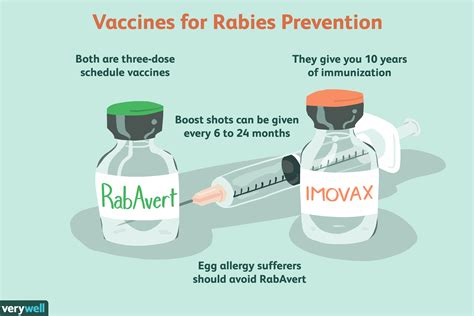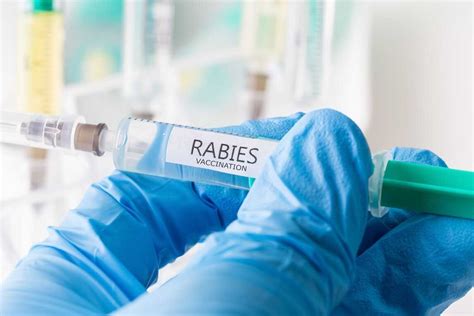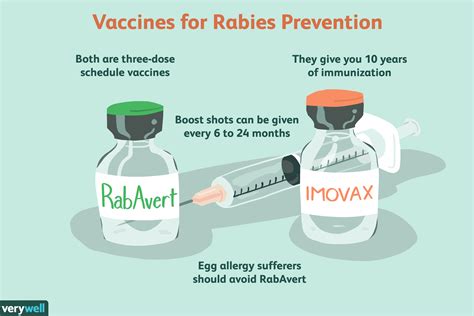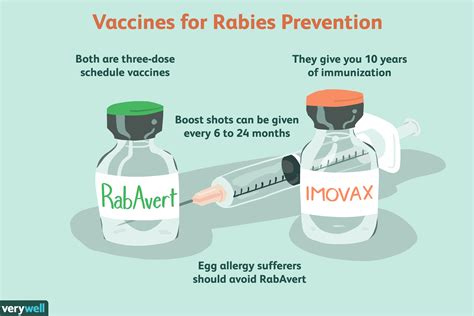Intro
Protect against deadly rabies with the Rabies Virus Vaccine, a crucial immunization preventing rabies infection, promoting public health and animal welfare through vaccination and prevention methods.
The rabies virus vaccine is a crucial component in the prevention and control of rabies, a deadly viral disease that affects the nervous system of mammals, including humans. Rabies is a significant public health concern, with tens of thousands of human deaths reported worldwide each year, primarily in developing countries. The development of effective vaccines against rabies has been a major breakthrough in the fight against this disease. In this article, we will delve into the importance of the rabies virus vaccine, its working mechanism, benefits, and the steps involved in its administration.
The rabies virus vaccine has been instrumental in reducing the incidence of rabies in many parts of the world. According to the World Health Organization (WHO), the vaccine is estimated to prevent hundreds of thousands of rabies deaths worldwide each year. The vaccine works by stimulating the body's immune system to produce antibodies that can recognize and neutralize the rabies virus. This provides long-term protection against the disease, making it an essential tool for preventing rabies in both humans and animals.
The importance of the rabies virus vaccine cannot be overstated. Rabies is a highly infectious and deadly disease that can be transmitted through the saliva of infected animals, usually through a bite. Once symptoms appear, the disease is almost always fatal. The vaccine is the most effective way to prevent rabies, and its widespread use has been credited with saving countless lives. In addition to its role in preventing human deaths, the vaccine also plays a crucial role in controlling the spread of rabies in animal populations, which is essential for maintaining public health and preventing the disease from spreading to other areas.
Rabies Virus Vaccine: Mechanism of Action

Types of Rabies Virus Vaccines
There are several types of rabies virus vaccines available, including inactivated vaccines, live attenuated vaccines, and recombinant vaccines. Inactivated vaccines are the most commonly used type of vaccine and contain killed rabies virus. Live attenuated vaccines contain weakened rabies virus and are used in some parts of the world. Recombinant vaccines use genetic engineering to produce a vaccine that contains only a portion of the rabies virus genome. Each type of vaccine has its own advantages and disadvantages, and the choice of vaccine depends on various factors, including the risk of exposure, the age and health status of the individual, and the availability of the vaccine.Benefits of the Rabies Virus Vaccine

The vaccine is also safe and well-tolerated, with few side effects reported. The most common side effects include pain, redness, and swelling at the injection site, as well as mild fever and headache. Serious side effects are rare, but can include allergic reactions and neurological problems. The vaccine is also relatively inexpensive, making it accessible to people in developing countries where the risk of rabies is highest.
Steps Involved in Administering the Rabies Virus Vaccine
The steps involved in administering the rabies virus vaccine depend on the individual's risk of exposure and their health status. For individuals who have been bitten or exposed to the saliva of an infected animal, the vaccine is typically administered as soon as possible after exposure. The vaccine is usually given in a series of injections, with the first dose administered immediately after exposure, followed by additional doses on the 3rd, 7th, 14th, and 28th days after the first dose.For individuals who are at high risk of exposure, such as veterinarians, laboratory workers, and travelers to areas where rabies is common, the vaccine is typically administered before exposure. The vaccine is usually given in a series of injections, with the first dose administered 1-2 months before travel or exposure, followed by additional doses 1-2 months later.
Rabies Virus Vaccine: Precautions and Contraindications

The vaccine should not be administered to individuals who are pregnant or breastfeeding, unless the risk of exposure is high and the benefits of the vaccine outweigh the risks. The vaccine should also be used with caution in individuals who have a history of neurological disorders, such as Guillain-Barré syndrome.
Rabies Virus Vaccine: Common Side Effects
The most common side effects of the rabies virus vaccine include: * Pain, redness, and swelling at the injection site * Mild fever and headache * Fatigue and weakness * Nausea and vomiting * Dizziness and lightheadedness * Allergic reactions, such as hives and itchingSerious side effects are rare, but can include:
- Neurological problems, such as numbness and tingling
- Allergic reactions, such as anaphylaxis
- Blood clotting disorders, such as thrombocytopenia
Rabies Virus Vaccine: Future Directions

These new vaccines have the potential to provide improved protection against rabies, as well as reduced side effects and improved safety. Additionally, researchers are exploring new ways to administer the vaccine, such as oral and nasal routes, which could improve accessibility and compliance.
Rabies Virus Vaccine: Global Efforts to Control Rabies
The global effort to control rabies involves a multi-faceted approach that includes vaccination, education, and awareness. The WHO and other international organizations are working to improve access to the rabies virus vaccine, particularly in developing countries where the risk of rabies is highest.In addition to vaccination efforts, education and awareness campaigns are being implemented to teach people about the risks of rabies and the importance of seeking medical attention immediately after exposure. These efforts have been instrumental in reducing the incidence of rabies worldwide and will continue to play a crucial role in the global effort to control the disease.
What is the rabies virus vaccine and how does it work?
+The rabies virus vaccine is a vaccine that prevents rabies, a deadly viral disease that affects the nervous system of mammals. The vaccine works by stimulating the body's immune system to produce antibodies that can recognize and neutralize the rabies virus.
Who should receive the rabies virus vaccine?
+The rabies virus vaccine is recommended for individuals who are at high risk of exposure, such as veterinarians, laboratory workers, and travelers to areas where rabies is common. The vaccine is also recommended for individuals who have been bitten or exposed to the saliva of an infected animal.
What are the benefits of the rabies virus vaccine?
+The benefits of the rabies virus vaccine include long-term protection against rabies, reduced risk of death and disability, and improved public health and animal health.
What are the common side effects of the rabies virus vaccine?
+The common side effects of the rabies virus vaccine include pain, redness, and swelling at the injection site, mild fever and headache, fatigue and weakness, nausea and vomiting, and dizziness and lightheadedness.
Can the rabies virus vaccine be used in pregnant or breastfeeding women?
+The rabies virus vaccine should be used with caution in pregnant or breastfeeding women, unless the risk of exposure is high and the benefits of the vaccine outweigh the risks.
In conclusion, the rabies virus vaccine is a crucial component in the prevention and control of rabies, a deadly viral disease that affects the nervous system of mammals. The vaccine provides long-term protection against rabies, making it an essential tool for preventing human deaths and controlling the spread of the disease in animal populations. We invite you to share your thoughts and experiences with the rabies virus vaccine, and to take action to help prevent the spread of rabies in your community. Together, we can work towards a future where rabies is no longer a threat to human and animal health.
